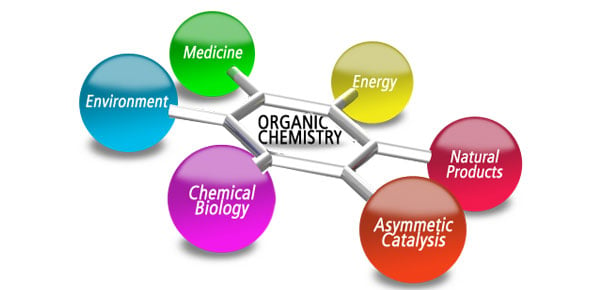Organic Chemistry Quiz Part 2

A short quiz to test and reinforce your understanding on the topic of organic chemistry
- 1.
Why are large alkane molecules cracked to form smaller molecules?
- A.
Alkanes with large molecules are not useful.
- B.
Small alkane molecules can be polymerised.
- C.
Crude oil does not contain small alkane molecules.
- D.
To meet the demand for small alkane molecules.
Correct Answer
D. To meet the demand for small alkane molecules.Explanation
Large alkane molecules are not as useful as smaller ones because they have limited applications. By cracking large alkane molecules into smaller ones, the demand for small alkane molecules can be met. This is because smaller alkane molecules have a wider range of uses, such as in the production of fuels, solvents, and chemicals. Therefore, cracking large alkane molecules allows for the production of more valuable and versatile products.Rate this question:
-
- 2.
Which fraction contains the largest molecules?
- A.
Kerosone
- B.
Petrol
- C.
Diesel
- D.
Bitumen
Correct Answer
D. BitumenExplanation
Bitumen contains the largest molecules among the given options. Bitumen is a highly viscous, black, and sticky substance that is a byproduct of petroleum refining. It is composed of complex hydrocarbon chains with a high molecular weight. These long and heavy molecules make bitumen thicker and more solid compared to other fractions like kerosene, petrol, and diesel, which have smaller and lighter molecules.Rate this question:
-
- 3.
Which statement about 'fossil fuel' is not true?
- A.
They all contain carbon.
- B.
They are renewable.
- C.
They produce pollutants when burnt.
- D.
They may cause acid rain.
Correct Answer
B. They are renewable.Explanation
The statement "They are renewable" is not true. Fossil fuels are formed from the remains of plants and animals that lived millions of years ago. They are considered non-renewable resources because they take millions of years to form and cannot be replenished within a human lifespan. Once we deplete fossil fuel reserves, they cannot be easily replaced. Therefore, the statement that fossil fuels are renewable is incorrect.Rate this question:
-
- 4.
Which of the following is not made from crude oil?
- A.
Aircraft fuel
- B.
Diesel oil
- C.
Furniture polish
- D.
Margarine
Correct Answer
D. MargarineExplanation
Margarine is not made from crude oil. Margarine is a spread made from vegetable oils, such as soybean, canola, or sunflower oil. It is produced by a process called hydrogenation, where the vegetable oils are chemically transformed into a solid form. Crude oil is not used in the production of margarine.Rate this question:
-
- 5.
1. Write the condensed structural formula of a straight chain alkane witha) 6 carbon atoms b) 12 hydrogen atoms c) 2-pentene
Correct Answer
a) CH3CH2CH2CH2CH2CH3 b) CH3CH2CH2CH2CH3 c) CH3CH=CHCH2CH3Explanation
The condensed structural formula for a straight chain alkane with 6 carbon atoms and 12 hydrogen atoms is CH3CH2CH2CH2CH2CH3. This formula represents a hydrocarbon chain with 6 carbon atoms bonded to each other in a straight line, with each carbon atom bonded to 2 hydrogen atoms. The formula for 2-pentene, on the other hand, is CH3CH=CHCH2CH3, which represents a hydrocarbon chain with 5 carbon atoms and a double bond between the second and third carbon atoms.Rate this question:
Quiz Review Timeline +
Our quizzes are rigorously reviewed, monitored and continuously updated by our expert board to maintain accuracy, relevance, and timeliness.
-
Current Version
-
Mar 21, 2023Quiz Edited by
ProProfs Editorial Team -
Dec 04, 2017Quiz Created by
Yasminpunzal


